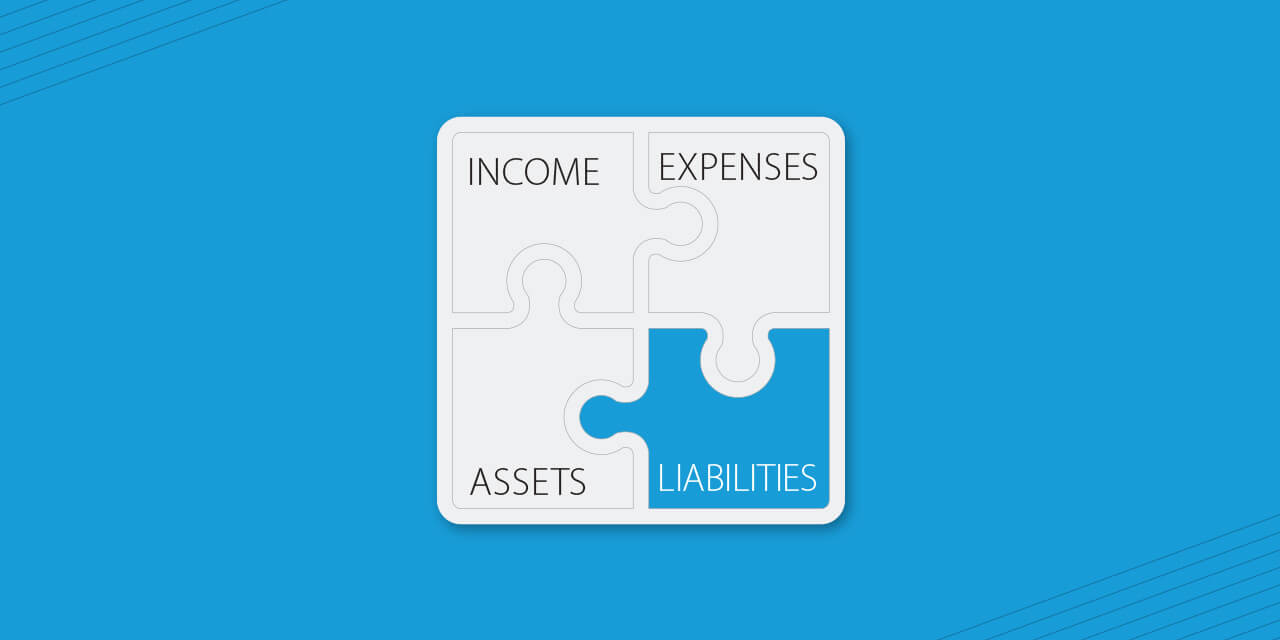
Retirement Guide
for Women
Understanding Your Wealth: Income
While the bulk of most people’s nest eggs are funded with retirement assets, you can supplement them with retirement income. For more people, retirement income will be generated from working, monthly Social Security benefits, a defined benefit plan like a pension, annuities, portfolio dividends or owning a business or real estate. In retirement, even modest regular income can go a long way toward reducing how quickly you need to draw down your assets.
Retirement Income – Sources and Strategies
Work Income
For some, the idea of working while in retirement is a non-starter – after all, the point of retiring is to enjoy your lifestyle without the pressures and commitment of a career. Still, there are a lot of benefits – financial and otherwise – to working in some capacity while still being retired:
- A reliable income stream. A regular paycheck can supplement your retirement savings and decrease the need to draw down your nest egg. It might also help you delay filing for Social Security, which could result in bigger payments when you’re in your 70s and beyond – a significant benefit given current trends for women and longevity.
- Additional contributions into a 401(k) or IRA. Retirement plans typically can only be funded through earnings – the longer you work, the longer you can contribute. This can be especially important for women, who often enter retirement with a smaller nest egg than men.
- Health insurance. One of the biggest – and hardest to predict – expenses in retirement is healthcare. Many working retirees find that the health coverage is more important to them than the paycheck.
- Structure and purpose. Humans tend to be creatures of routine, and a lot of retirees struggle with the transition from a 40-hour work week to a 0-hour work week. Working even part-time gives them structure and the feeling that they’re still contributing and useful members of society.
- Social interaction. Working in retirement also allows retirees to broaden their circle of friends and stay socially stimulated. This holds true for married couples and especially those who are single.
It can also give you an opportunity to start a second career. Maybe there was a business you wanted to start, but you didn’t have the time for during your working years – or you didn’t want to jeopardize your financial goals on an exciting but risky new venture. Retirement could be an ideal time to explore your interests and try something you’re passionate about.

|
Divorce and Widowhood |
It’s important to not underestimate the social and structural benefits of working as a widow or divorcee. As we get older, having a support network becomes that much more critical. Harvard Medical School reported that adults age 65 and older who interacted with those outside their social circle were more likely to have higher levels of physical activity, greater positive moods and fewer negative feelings.16
Social Security
Since 1940, Social Security has been helping workers navigate retirement after their careers have ended and paychecks stopped coming in. The program is relatively straightforward: The federal government withholds a percentage of each paycheck during your career, and in return, you receive inflation-adjusted retirement benefits that never run out. Generally, the more you earn during your working career, the greater the monthly benefit in retirement.
To qualify for Social Security, you need to have been working (and contributing to Social Security) for at least 10 years, and your benefit is based on the 35 years in which you earned the most income. You can file for Social Security as early as age 62 (for a reduced benefit) or as late as age 70 (for the maximum benefit). Note that the average monthly benefit is roughly $1,900 per month, so most people shouldn’t rely solely on Social Security for funding their retirement.17
22% LESS
The average annual Social Security benefit collected by a 65-year-old woman is 22% less than that collected by a 65-year-old man. 18
|
Strategies for Maximizing Your Social Security Benefits |
• Generally, the longer you can delay filing for Social Security, the better – filing at age 62 rather than what is known as Full Retirement Age (currently age 66 or 67, depending on when you were born) would generate income sooner, but those checks would be 30% smaller. Your lifespan is the key: Someone who lives into her 80s and 90s might be better served by waiting and maximizing her Social Security benefit.
• The Social Security program also provides spousal benefits that can be worth up to half of your spouse’s benefit. If your own retirement benefit would be less than half of your spouse’s, you would automatically get the larger amount.
• If you choose to file early, you can suspend your monthly payments upon reaching your Full Retirement Age and earn delayed retirement credits. Those credits can boost your monthly payments by as much as 8% per year when you resume.19
|
Divorce and Widowhood |
The Social Security program also provides a spousal benefit worth up to half of your benefit’s value at normal retirement age. This spousal benefit can apply to divorced couples if certain criteria are met: If (1) the marriage lasted at least 10 years, (2) you haven’t remarried and (3) your ex-spouse is age 62 or older. You can claim the spousal benefit even if your ex-spouse remarries or hasn’t filed for Social Security.
In the event of widowhood, you can collect your deceased spouse’s full retirement benefit at age 60. Disabled survivors can collect survivor benefits beginning at age 50, and if the survivor is caring for children under age 16, the benefits start immediately.
Pensions
Pensions, which fall under the defined benefit plan category, provide the retired employee with a fixed ("defined") monthly payment. Each organization will have its own formula for calculating the monthly benefit, but it’s typically based on such factors as years of service with the company, role and compensation. Most defined benefit plan benefits are taxable as ordinary income.
For retirees, the biggest advantages to defined benefit plans are that the monthly benefit is fixed and guaranteed. Because the amount is fixed, you know exactly how much you can expect every month in retirement, regardless of how the stock market is performing. Most plans are also insured by the federal government through the Pension Benefit Guaranty Corporation, so even if your company cannot meet its financial obligations, the PBGC will step in as needed.
If you have a defined benefit plan, it’s especially important to understand the details, including eligibility requirements, vesting and what happens to your pension if you retire early or switch jobs. In some cases, your pension benefit might be reduced when you begin to take Social Security.
Defined Benefit Plans
Defined Contribution Plans
The biggest difference between a defined benefit plan (such as a pension) and a defined contribution plan (such as a 401(k) or employee stock ownership plan) is the source of funding: Businesses are responsible for funding and managing their defined benefit plans, while for defined contribution plans those responsibilities fall to the employee.
|
Divorce and Widowhood |
If your spouse lists you as a pension beneficiary and you and your spouse divorce, you still might be able to secure a portion of the pension benefit through a qualified domestic relations order. Contact your spouse’s plan administrator for a list of all QDRO requirements.
In the event of the death of your spouse, you can request a summary plan description from your spouse’s employer. That description would provide a list of benefits, including potential survivor benefits.
Annuities
Social Security and pensions aren’t your only options for generating income for life – annuities can provide monthly or annual income as well, although they are complicated retirement savings instruments that are not for everyone.
All annuities are built on a basic premise: The buyer purchases an annuity, and in return, the insurance company would provide guaranteed payments back to the buyer. Within that structure though can be a wide variety of options:
With a fixed annuity, you know exactly how much the payments coming back to you will be, while income from variable annuities will fluctuate with the market, increasing the potential for return but also risk.
With an immediate annuity, you would pay the insurer a lump sum (like a retirement nest egg) and start collecting payments right away, while with a deferred annuity, you don’t start receiving payments until a specified date, which gives your investment time to grow.
And the variations only grow from there.
Two of annuities’ biggest advantages are the potential for guaranteed income for life, no matter how long you live, and that taxes are deferred until you withdraw, giving you some measure of control for tax planning purposes. But they can also be very complex, carry substantial fees and are typically illiquid investments, often charging a hefty surrender fee should you decide you need to withdraw funds sooner than anticipated. For these reasons, it might be prudent to first sit down with a Baird Financial Advisor and explore how annuities could fit in your financial plan.
Portfolios
In addition to providing a nest egg you can draw down from, certain investments in your portfolio can also provide income in retirement. The most common source of portfolio-generated income is through interest (typically from bonds) and dividends (typically from certain blue-chip stocks).
- Interest income is generated by corporate and municipal bonds, mutual funds that invest in bonds, certificates of deposit and money market funds. Interest is paid on a regular schedule – typically semiannually, although some investments will pay interest monthly, quarterly or annually. While all bonds carry some level of risk, they are typically considered safer investments than stocks, and with that safety comes a more muted return in interest.

- Dividend income, on the other hand, is paid out by stocks and mutual funds that own stocks. They also are often paid out quarterly, and dividend payouts must first be approved by the company’s board of directors. Investments in dividend-paying companies are often expensive (compared to the rest of the market) but also lower-risk: Companies that issue dividends usually are well-established and no longer need to reinvest in their business. Dividend income is usually taxed at the same rate as capital gains tax rates, which are less than ordinary income tax rates.
While you might be tempted to invest heavily in these kinds of investments and live off the income they generate, it’s worth remembering that none of these returns are guaranteed. Blue-chip companies might choose to reduce or forgo a dividend, and bonds can default or mature in a low-yield environment (which typically means you’re replacing a higher-yielding bond with a lower-yielding one). Plus the income they generate might not be sufficient to meet your spending in retirement.
Business Ownership
For many business owners, their company is more than a calling – it’s their primary source of income in retirement. A 2018 New York Life survey found that 42% of small-business owners anticipate using income from their business as their own “personal pension.”20 While business owners should absolutely plan to incorporate their company’s profits into their plans, there’s risk in relying on business proceeds as a savings account to pay your monthly bills in retirement:
- One of the biggest risks in retirement planning is banking in continued good health – especially if you plan on continuing to run your business in retirement. The truth is, there’s no way to tell how well, or how long, you’ll be able to manage your business when you’re older. You don’t want fears of an underfunded retirement to be the primary reason to continue running your business.
- If you are relying on continued business growth or selling the business to sustain you in retirement, you’re opening yourself up to risk. Were economic conditions to change or a new competitor or technology to cut into your profit margins, you might see your business income take a serious hit – leaving you with few options to make up for those losses.
46%
of small business owners do not have a backup plan if they are unable to sell their business or if the proceeds are not sufficient for retirement. 20

That’s why it’s crucial to save for retirement as a small-business owner, even if you expect to continue running your business into your 60s and beyond. Nearly half of small-business owners do not have a backup plan if they are unable to sell their business or if the proceeds are not sufficient for retirement 20, which means it's necessary to give serious thought to an exit strategy (transferring the business, selling it, taking it public) and setting up a more formal retirement plan, like an IRA or Solo 401(k). That retirement plan, coupled with whatever revenue you do make from the operation or sale of your business, could be enough to create the nest egg to help you retire with confidence.
Real Estate
Real estate can also provide a steady income stream ahead of and into retirement, even if you have no interest in managing a property yourself. From real estate investment trusts (REITs) to crowdfunding platforms to securing your own property, real estate offers a wide variety of ways to fund your retirement.
One big advantage to real estate as a revenue stream is that it’s typically not correlated with the stock market. A major risk in investing is a lack of diversification – when too many investments in your portfolio increase or decrease in value together. Having too much of your portfolio decline all at once in retirement could be especially harmful, as most retirees have neither the time nor the revenue sources to recoup any losses. Because the income generated through real estate is not primarily correlated with stocks, it can be a helpful revenue source especially in a down market.
There are other advantages too. Not only do real estate assets typically appreciate over time, but as a landlord, you would benefit from having your renters pay off your mortgage for you. In addition, owning real estate has its own set of tax benefits. Just be aware that if you decide to manage a property yourself, this kind of “passive income” might not be passive enough for your lifestyle: Between identifying and evaluating renters, maintaining the property and collecting rent, renting out property might involve more of your time and energy than you’re willing to invest.
Building Multiple Paths to Generating Income in Retirement

Our ability to build a suitable nest egg and retire with confidence hinges on how well we can build our resources – ideally from diverse funding sources. The adage “don’t put all your eggs in one basket” is often cited with investing and asset allocation, but it also applies to how you fund retirement. Consider:
- Social Security can make up a significant portion of your monthly income in retirement … but it’s uncertain how long the program will last. According to the Social Security Administration’s 2024 Trustees Report, Social Security – which has been running at a deficit since 2010 – only has the funds to pay the entirety of retirees’ scheduled benefits until 2033. 21 While legislation out of Washington could prevent that from happening, it might be prudent to adjust your plans now so you don’t have to rely on a full Social Security benefit.
- It’s one thing to plan on working in retirement when you’re still young – but will you still want – or be able – to when you’re 70? The Census Bureau’s 2021 American Community Survey indicates that nearly 1 in 4 Americans age 65 or older – and nearly half of Americans age 75 and older – report having a disability.22
|
Strategies for Earning Income While in Retirement |
• If you file for Social Security before reaching Full Retirement Age, your earned income in retirement could reduce your monthly Social Security benefit. 23 In 2024, for every $2 above $22,320, $1 will be deducted from your monthly benefit. Note that you will receive higher monthly benefits after you reach Full Retirement Age if benefits are withheld because of your income.
• Similarly, if you earn a substantial income in addition to your benefits, you might be responsible for federal income taxes. Depending on your tax filing status and total combined earnings, up to 85% of your benefits might be taxable.
• Know that working during retirement could bump you into a higher tax bracket, causing you to pay more tax on your IRA or 401(k) distributions.
Part of retiring with confidence is making sure the funds you’ll rely on in retirement will be there when you need them. Building up the funds under your control – contributions to an employer’s retirement plan (especially when they offer a match) and your own personal savings and investments – can help remove that uncertainty.
Baird's Retirement Guide for Women:
NEXT: Understanding Your Wealth: Liabilities >>
Explore the Rest of the Guide:
Build Confidence in Retirement >>
How We Got Here >>
Understanding Your Wealth: Assets >>
Understanding Your Wealth: Income
Understanding Your Wealth: Liabilities >>
Understanding Your Wealth: Expenses >>
Where We Go from Here >>
